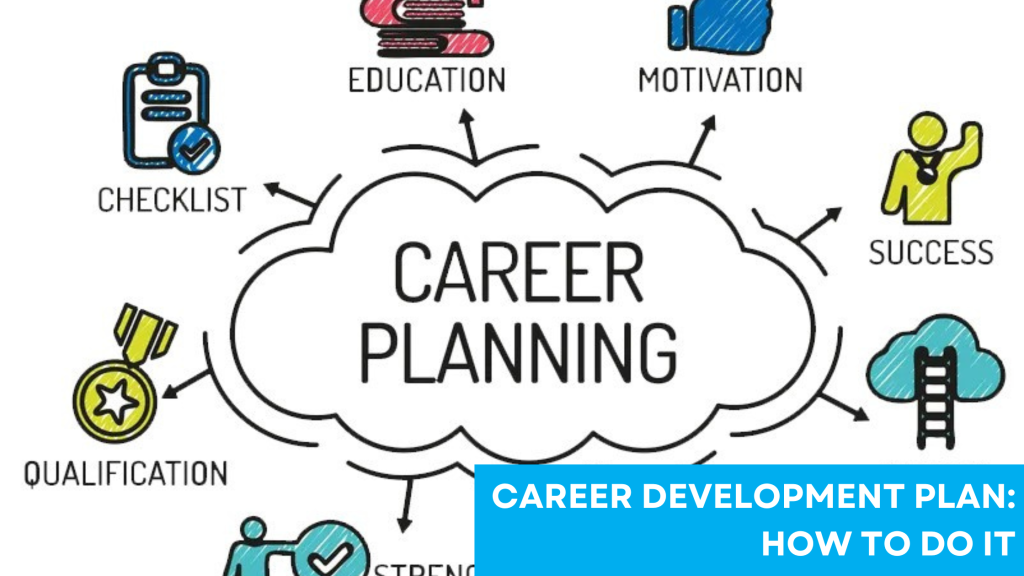Understanding Career Development
Career development involves setting goals and taking steps to grow professionally over time.
It requires self-reflection and ongoing effort to achieve success.
Defining Career Development Goals
Career development goals give direction to a person’s professional journey.
These goals should be specific, measurable, and time-bound.
For example, “Get promoted to manager within 3 years” is clearer than “Move up in the company.”
Short-term and long-term goals both matter.
Short-term goals might include learning new skills or taking on more responsibilities.
Long-term goals often focus on major career milestones.
It’s important to write goals down and review them regularly. This helps keep a person focused and motivated.
Career planning involves developing an understanding of oneself and one’s goals.
Importance of Self-Assessment
Self-assessment is key to career development. It helps people identify their strengths, weaknesses, interests, and values.
This information guides career choices and goal-setting.
Regular self-assessment keeps career plans on track. It can reveal new opportunities or needed changes.
Tools like personality tests and skills inventories can aid this process.
Understanding one’s aspirations is crucial for career development.
Self-assessment helps clarify these aspirations. It also shows areas where people need to improve to reach their goals.
Self-awareness leads to better career decisions. It helps people choose roles that fit their skills and interests. This increases job satisfaction and success.

Creating Your Career Development Plan
A career development plan helps you map out your professional growth. It outlines your goals and the steps to reach them. This plan is key to career success.
Components of a Career Plan
A good career plan has several key parts.
First, it needs a clear vision of where you want to go. This could be a job title or role you want to reach.
Next, it should list your current skills and knowledge. This helps you see what you already have and need to learn.
The plan must also have specific goals.
These goals should be both short-term and long-term.
Short-term goals might be things you can do in a few months. Long-term goals might take years to achieve.
Your plan should also include action steps.
These are the tasks you need to do to reach your goals. They might include taking classes, getting certifications, or gaining new work experiences.
Using a SMART Goal Template
SMART is a framework for setting good goals. It stands for Specific, Measurable, Achievable, Relevant, and Time-bound.
Specific means your goal should be clear and detailed. Instead of “get better at my job,” try “improve my project management skills.”
Measurable goals have numbers or facts to track progress. For example, “complete two project management courses this year.”
Achievable goals are realistic. They stretch you but are not impossible.
Relevant goals fit with your career path and values. They should move you towards your long-term vision.
Time-bound goals have deadlines. This creates urgency and helps you stay on track.
Using a SMART goal template can make your career plan stronger. It helps you create goals that are clear and doable.
Setting Realistic and Achievable Goals
Setting goals is key for career growth. Good goals are clear, doable, and tied to a timeline. They push you but don’t set you up to fail.
Identifying Short-Term and Long-Term Goals
Short-term goals are things you can do in weeks or months. Long-term goals may take years. Both types matter for your career.
Short-term goals build skills fast. They can be small wins that add up.
For example, “Learn a new software in 30 days” or “Give three work talks this quarter.”
Long-term goals shape your big picture. They guide your career path. Examples are “Become a team lead in 3 years” or “Start my own business in 5 years.”
Meaningful goals reward you with real progress.
Make sure your goals fit your values and skills. This helps you stay on track.
Mapping Milestones and Deadlines
Milestones are steps on the way to your goal. They help you see progress. For a big goal, break it into smaller parts.
Set clear deadlines for each milestone. This keeps you moving forward. Be realistic about time frames.
Use a chart or app to track your progress. Mark off milestones as you reach them. This gives you a sense of success along the way.
Aligning your goals with your job can help. Talk to your boss about how your goals fit the team’s needs. This can lead to more support for your plans.
Maximizing Resources and Support
Getting help from others is key for career growth. Using mentors, managers, and career experts can give you new skills and opportunities.
Leveraging Mentorship and Guidance
Find a mentor in your field. Look for someone with experience who can share wisdom. Ask them about their career path and the challenges they faced.
Set up regular meetings with your mentor. Come prepared with questions and goals. Listen to their advice, but make your own choices.
Your manager can also guide you. Ask for feedback on your work. Discuss your career goals and how to reach them.
Seek out industry experts. Attend conferences and networking events. Join professional groups to meet others in your field.
Utilizing HR and Career Coaches
Talk to HR about training options. Many companies offer classes or workshops. Ask about tuition reimbursement for outside courses.
Schedule a meeting with HR to review your career plan. They may know about job openings or skills the company needs.
Consider working with a career coach. They can help you set goals and make plans. A coach can also improve your resume and interview skills.
Use online tools and assessments. Many websites offer free career advice. Take skills tests to find your strengths and weaknesses.
Read books and articles about your industry. Stay up to date on trends and new ideas. This knowledge can help you stand out at work.
Developing Essential Skills and Competencies
Identifying and improving key skills is crucial for career growth. A focused approach to skill development helps professionals stay competitive and adapt to changing job markets.
Identifying Current Skills and Skill Gaps
The first step in skill development is to assess current abilities.
Professionals can create a list of their strengths and weaknesses. This helps pinpoint areas that need improvement.
Leadership skills are often a key focus. Many find that communication is especially important to develop. Other common areas include technical skills, problem-solving, and teamwork.
To identify skill gaps, professionals can:
- Review job postings in their field
- Ask for feedback from colleagues and supervisors
- Compare their skills to industry standards
This process reveals which skills need work. It also shows which new skills might be valuable to learn.
Pursuing Training and Certifications
Once skill gaps are clear, the next step is to find ways to improve.
Many options exist for developing competencies.
Training courses are a popular choice. These can be online or in-person. They offer structured learning on specific topics. Some employers provide in-house training programs.
Certifications prove expertise in certain areas. They can boost a professional’s credibility and job prospects. Many industries have specific certifications that are highly valued.
Other learning opportunities include:
- Workshops and seminars
- Mentorship programs
- Online tutorials and webinars
- Reading industry publications
Professionals should choose learning methods that fit their schedule and learning style. Regular practice helps turn new knowledge into practical skills.
Building a Professional Network
A strong professional network can open doors to new opportunities and accelerate career growth. It involves connecting with peers, attending industry events, and building relationships that can provide valuable insights and support.
Networking Strategies
Effective networking starts with setting clear goals.
Professionals should identify the types of connections they want to make and the areas they want to explore.
LinkedIn is a powerful tool for online networking.
Users can join industry groups, engage in discussions, and connect with peers.
Job shadowing and informational interviews are great ways to learn about different roles and companies. These provide firsthand experience and help build relationships with industry insiders.
Attend conferences and workshops related to your field. These events offer chances to meet peers and learn about industry trends.
Volunteer for professional organizations. This can lead to leadership roles and expand your network.
Engaging with Industry Peers and Events
Industry events are key for professional development. They offer chances to learn, share ideas, and meet potential mentors or collaborators. Prepare an elevator pitch to introduce yourself effectively at these gatherings.
Follow up with new contacts after events. Send a brief email or connect on LinkedIn to maintain the relationship.
Join professional associations in your field. These groups often host networking events and provide resources for career growth.
Consider starting a blog or contributing to industry publications. This can establish you as a thought leader and attract like-minded professionals to your network.
Participate in online forums and webinars. These platforms allow for networking without geographical limitations.
Managing Progress and Adjustments
Keeping track of career progress and making needed changes is key. A good plan has ways to measure success and handle problems that come up.
Tracking Success and Making Decisions
Career coaches help people check if they’re meeting their goals.
They look at things like:
- Job performance reviews
- New skills learned
- Projects completed
- Networking contacts made
It’s smart to set clear targets to aim for. This makes it easier to see progress.
Regular check-ins are important.
People should review their plan every few months. They can ask:
- Am I on track?
- Do I need to change anything?
- What’s working well?
- What isn’t working?
Based on the answers, they can decide what to do next.
Maybe they need more training. Or it might be time for a new job search.
Handling Obstacles and Setbacks
Career paths aren’t always smooth. Problems will come up.
The key is to stay flexible.
Common career obstacles include:
• Job loss
• Company changes
• Family issues
• Health problems
When facing setbacks, it helps to:
- Stay calm
- Look at what happened
- Think of new solutions
Failure isn’t the end. It’s a chance to learn and improve.
Smart people adjust their plans when needed.
Having a backup plan is wise. This gives options if the first choice doesn’t work out.
It’s good to be ready to shift gears.
Leveraging Professional Guidance
Professional guidance plays a key role in career development. It provides valuable insights and support to help individuals reach their goals.
Managers, HR professionals, and career coaches all offer unique perspectives to enhance career growth.
Role of Managers and HR
Managers and HR professionals are vital for career development. They offer:
- Regular performance reviews
- Goal-setting assistance
- Skill gap analysis
Managers can provide meaningful professional direction through mentorship. They help employees identify strengths and areas for improvement.
HR teams often create training programs and staff development processes.
These professionals can guide employees in creating a professional development plan.
This plan outlines steps for growth within the company. It may include:
• Training opportunities
• Stretch assignments
• Cross-departmental projects
Benefits of a Career Coach
A career coach offers personalized guidance outside the workplace. They bring fresh perspectives to career planning.
Benefits include:
- Objective feedback on skills and goals
- Strategies for overcoming career obstacles
- Accountability for taking action
Career coaches help clients explore new paths. They can spot hidden talents and suggest ways to leverage professional experience.
Coaches often use assessments to identify strengths and values.
They assist in creating targeted job search strategies.
This includes resume reviews and interview preparation.
A coach can also help with networking and personal branding.
Evaluating Career Opportunities
Examining job options helps you make smart career choices. Look at job postings and think about how you fit with different companies.
Analyzing Job Postings and Market Trends
Keep an eye on job boards and company websites for openings in your field.
Pay attention to the skills and experience employers want. This shows what’s in demand.
Look at how many jobs are posted and how often. This can tell you if a career is growing or shrinking.
Check if the number of jobs is going up or down over time.
Industry reports and news can give you more info about job trends.
They might talk about new tech or changes that could affect jobs.
This helps you plan for the future.
Think about how stable different careers are.
Some fields change fast, while others stay steady. Pick a path that matches your comfort with change.
Assessing Organizational Fit and Salary Expectations
Think about what type of workplace you like. Do you want a big company or a small one? A casual office or a formal one?
Look for places that match your style.
Research salaries for jobs you want. Sites like Glassdoor or PayScale can help.
Compare pay across different companies and cities. This helps you know what to expect.
Look at more than just pay.
Think about benefits, work-life balance, and growth chances.
Some jobs might pay less but offer better perks or learning opportunities.
Consider how a job fits your long-term goals.
Will it help you grow and learn new skills? Pick jobs that move you closer to your dream career.
Ensuring Continuous Learning and Improvement
A good career development plan needs ongoing effort and growth. It takes a clear approach and helpful feedback to keep getting better at your job.
Adopting a Systematic Approach to Development Activities
Make a roadmap for your career growth.
Start by looking at your current skills and where you want to go. Find the gaps between those two points.
Pick activities that will help close those gaps. This could mean taking classes, reading books, or doing new tasks at work.
E-learning courses are a great way to learn new skills. Many companies offer free online classes to their workers.
Set clear goals for each month or quarter.
Check your progress often. If you’re not moving forward, change your plan.
Embracing Feedback and Peer Review
Ask for feedback from your boss and coworkers. They can point out areas where you need to improve.
Don’t get upset by criticism. See it as a chance to get better at your job.
Find a mentor in your field. They can give you advice and help you grow in your career.
Join groups for people in your job. You can learn from others and share what you know.
Career development resources like books and websites can also help you improve. Look for ones that fit your career goals.
Translating Plans into Action
Turning career goals into reality requires breaking down plans into specific steps and tracking progress. This process involves creating actionable tasks and measuring achievements.
From Strategies to Action Items
An action plan helps translate career strategies into concrete tasks.
Start by listing specific goals and breaking them into smaller, manageable action items. For example:
Goal: Improve public speaking skills
- Action item 1: Join a local Toastmasters club
- Action item 2: Volunteer to present at team meetings
- Action item 3: Take an online course on public speaking
Set clear targets for each action item.
This might include deadlines, frequency, or measurable outcomes.
Having specific, time-bound goals increases the chances of follow-through.
Create a schedule to work on these action items.
Block out time in a calendar for each task. This turns abstract plans into part of a daily or weekly routine.
Measuring and Documenting Achievements
Tracking progress is key to staying motivated and assessing growth.
Use a spreadsheet or app to log completed action items and their outcomes.
Create measurable indicators for each goal. For public speaking, this might include:
- Number of presentations given
- Audience feedback scores
- Self-assessment of confidence levels
Regularly review and update the action plan.
Celebrate small wins along the way. This builds momentum and reinforces positive habits.
Write brief summary statements after completing major milestones.
These provide a record of growth and can be useful for resumes or performance reviews.
Conclusion
Career development plans are key tools for professional growth. They help workers set goals and map out steps to reach them.
A good plan looks at skills, interests, and values.
Making a career plan takes time and thought. Start by looking at where you are now in your job.
Think about where you want to go next. Write down clear goals for the future.
Break big goals into smaller steps. This makes them easier to reach.
Set dates for each step to stay on track. Career management programs can help with this process.
Keep learning new skills. Take classes or get more training.
This helps you grow in your job. It also opens doors to new roles.
Review your plan often. Update it as your goals change.
A career plan is not set in stone. It should grow with you over time.
Ask for feedback from others. Talk to your boss or a mentor.
They can give good advice on your career path. Their input can make your plan stronger.
Remember, a career plan is a guide. It helps you move forward in your work life.
With a solid plan, you can take charge of your future.



